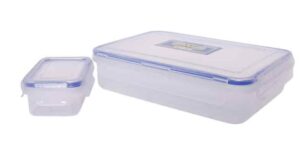Decades ago I had the pleasure of visiting Vancouver, Canada (both the city and the island).
In the middle of the city I visited an art exhibition. One of my recollections was that the artist had a kitchen based around dozens of half-litre glass (pyrex?) bowls.
Half a litre, she maintained, was good for a sensible portion of food, a coffee for the parched or an entertaining margarita!
When washed, these bowls formed a well-aired pyramid on the draining board.
Their size and shape allowed them to be nested so they took up little cupboard space when not in use.
The bowls could be used for both hot and cold foods and drink, and presumably could be used in a microwave too.
It was an interesting concept and I am usually reminded of its simplicity whenever I see a Buddhist monk with his bowl.
Unfortunately it is not an idea I have been able to put into practical use myself. There are always other priorities for my money, and I have yet to come across a really good bulk offer of bowls.
This brings me to the subject of “tableware” for camping and backpacking.
As I have discussed recently, if we are really travelling lightweight our only cooking vessel will be a canteen cup or mess tin, and this also serves as our coffee cup, soup-bowl or similar.
Other situations may warrant a more extensive cooking kit. With the possible exception of the old US Army mess kit, most military mess kits do not offer you many more options than a canteen cup. Most civilian kits are less than ideal too.
Today’s blog is not about cooking kits, however, but how you eat the food once it is cooked.
You can, of course, eat your food direct from the pot or pan, taking care not to scratch any non-stick coating, or burn yourself.
If you have company, or a third party is cooking for you, you will need some bowls and/or plates.
There are a variety of camping tableware kits available, although to my mind many of these appear somewhat expensive for what they are.
Ideally, we need some kind of bowl, made from a material that will withstand the inevitable knocks and bumps that transport in a pack can involve.
Root around you local discount store and see what is available in the shape of sandwich boxes.
I got particularly lucky, since they had a whole shelf of boxes similar to this:

The lid locks shut for extra security.
In addition, the 1.1 litre box comes with a 0.5 litre smaller box inside. The inner box also has a locking lid.
Size and shape of the larger box is well suited to carriage in the side pocket of a rucksack. You may prefer a squarer or smaller item, so shop around.
The box bottom can be used as a bowl.
The lid can serve as a plate for foods that are better suited to plates than bowls.
The shape of the inner box is not ideal as a drinking vessel, but this can be replaced with something else.
Many designs of plastic beaker could be fitted inside the larger box, and plastic mugs or cups are fairly easy to acquire at a reasonable price.
And you may be carrying your canteen cup, anyhow.
The interior of the sandwich boxes can be used to carry additional items. A spork seems to be an obvious choice.
Teabags and other food items can be carried.
Don’t use the interior of your eating vessel to carry items such as hexamine fuel, or anything that might taint your food.
The box itself might be used for stoveless cooking.